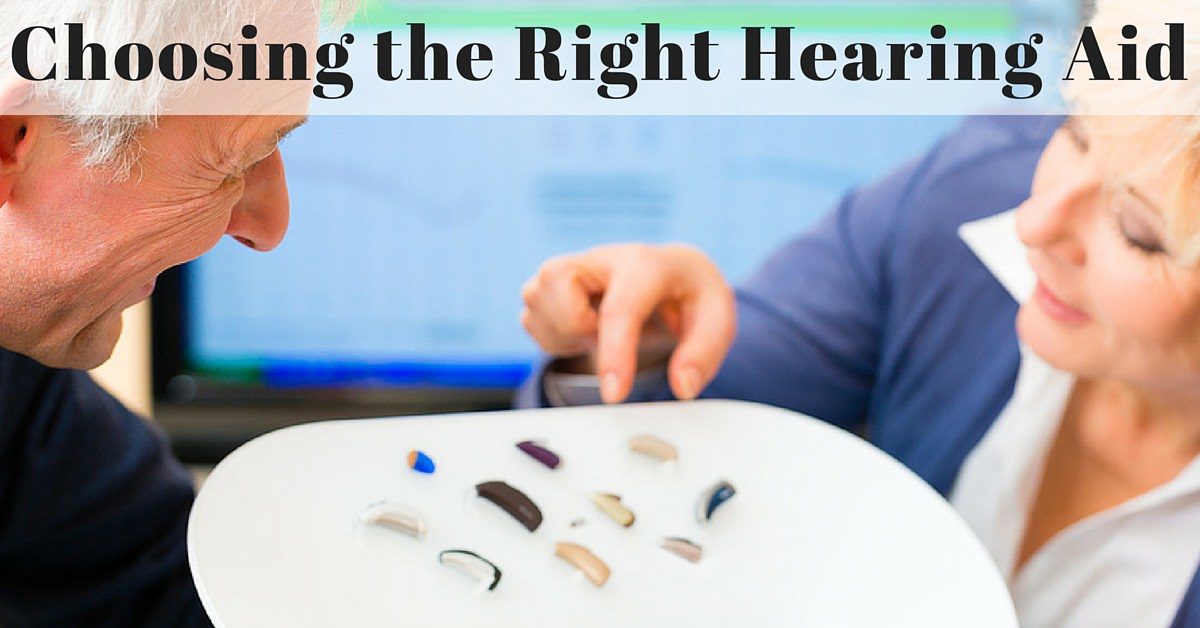Choosing the Right Hearing Aid
Once you have made the decision to tackle your hearing loss through the use of a hearing aid, it’s time to consider your options. Here is our guide to choosing the right hearing aid.
Fitting your hearing aid
Everyone hears differently. After a consultation with audiologist Laurie Duffy, M.S., test results can be matched with the hearing aid of your choice to best suit your specific needs. This means that your hearing aid will be uniquely fitted to you. A tighter fit will reduce the amount of feedback, so it is doubly important to book a fitting!
Here are some of the different things to consider when thinking about the perfect hearing aid for you.
Hearing aid styles: Behind-the-ear
Behind-the-ear (BTE) devices can be used for mild to profound hearing loss. BTEs wrap around the ear and are connected to the outer ear by a plastic ear mold.
Hearing aid styles: Open-fit
Open-fit hearing aids are a specific type of BTE that is more discreet, as the hearing aid fits completely behind the ear. These can be good for people with frequent ear wax build-up.
Hearing aid styles: In-the-ear
In-the-ear (ITE) hearing aids can also be used for a range of hearing loss levels, and fit completely inside the ear. These devices are custom-made to fit each unique ear and are easy to insert.
Hearing aid styles: Receiver-in-canal
Receiver-in-canal (RIC) hearing aids are the most discreet option, as they fit almost entirely within the canal. Their small size does reduce their battery size and amplification power, so these hearing aids are most suitable for those with mild hearing loss. They are a great option for people with a very active lifestyle!
Battery life
Hearing aids vary in size, as do their batteries. The four main types of batteries are all smaller than the diameter of a dime, and the size of the battery will depend on the power needed to run the hearing aid.
Larger hearing aids generally last longer, as they have the ability to store more power. If a hearing aid is used for an average of 16 hours a day, the battery can last up to 20 days!
Extending battery life
The average time span for a medium-sized battery (Size 13) is six to 14 days, but simple things like turning the hearing aid off when it is not in use – for instance, when a person is sleeping – can help to extend battery life. Storing batteries at room temperature also helps to get the best performance.
Wireless connection, telecoils and induction loop systems
The majority of hearing aids today can be fitted with a telecoil, which uses a magnetic signal to reduce feedback. Telecoils also allow people to link with induction loop systems. These systems are often found in public places such as cinemas, airports and event venues. Telecoils are also useful for amplifying telephone calls.
Bluetooth
New technology such as Bluetooth allows hearing aids to connect to personal devices. When receiving a telephone call, for example, Bluetooth can connect hearing aids to connect a cell phone, and will amplify the sound. This is a fairly new technology, but is just one example of the exciting options available.
When you get your hearing aid fitted with audiologist Laurie Duffy, M.S. at HearCare Rhode Island, you can discuss the range of products available and the special features that will fit your lifestyle.
You don’t have to live with untreated hearing loss. Contact us today!
Hear Care – Rhode Island
200 Toll Gate Rd
Suite 203
Warwick, RI 02886

